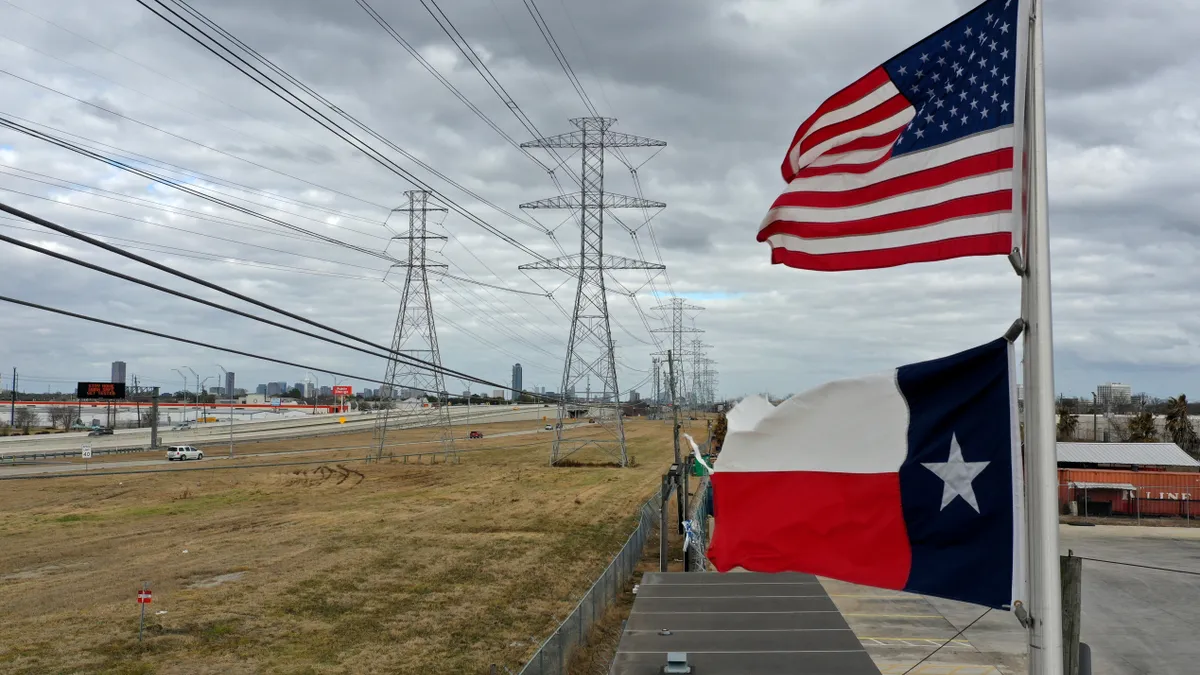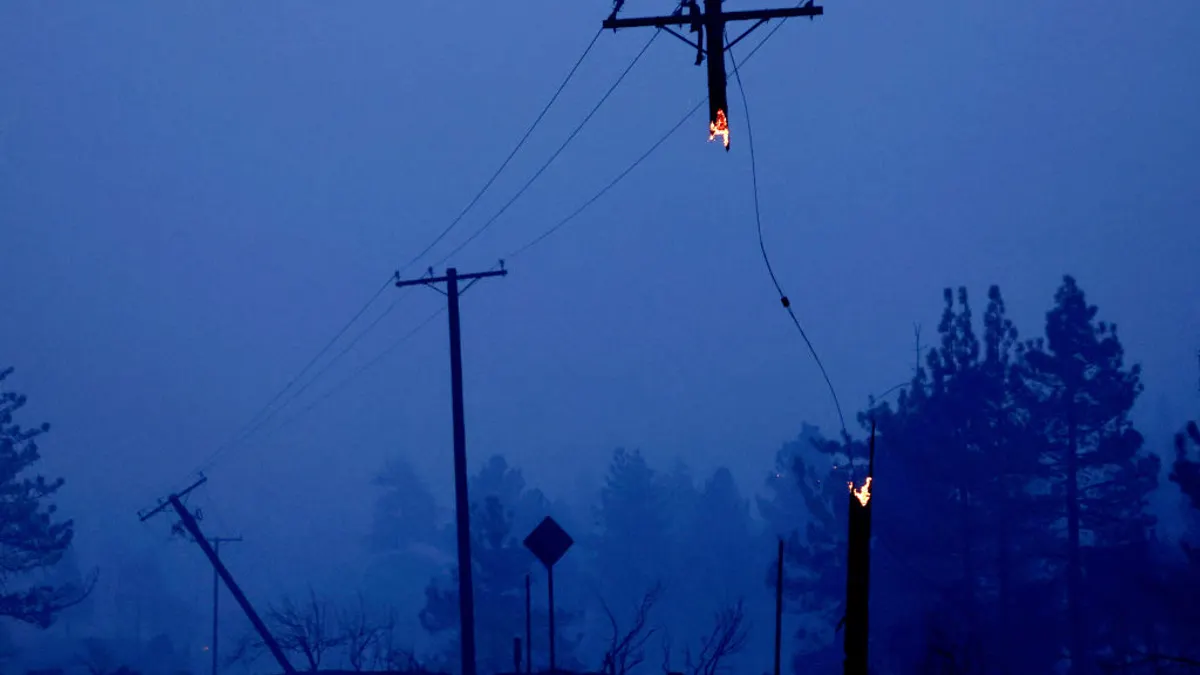The following is a contributed article by Dan Esposito, senior policy analyst at Energy Innovation, and Eric Gimon, senior fellow at Energy Innovation.
Editor's Note: This is the third of a three-part op-ed series in Utility Dive based on Energy Innovation's research examining 1) what drove the extended Texas outages, 2) the degree to which energy markets failed and 3) how different entities can improve U.S. energy market and power infrastructure resiliency against extreme events while decarbonizing the grid to mitigate future climate risk.
Texas was wholly unprepared for February's "Big Freeze" winter storm, with an estimated 700 deaths potentially making it the state's deadliest disaster in more than a century. Such climate-related disasters will increase in frequency, but tragic fallout can be avoided.
New research from Energy Innovation shows the right policy and regulatory approach can address the market failures that created this suffering and enable a clean and resilient grid, reducing the frequency of these disasters and protecting people from those that still occur.
Unfortunately, Texas legislators punted on meaningful solutions that would help avoid future grid-related tragedies. Weak power plant winterization standards will only marginally help, absent additional measures. Bills spreading the Big Freeze's price tag out over time and preventing the Electric Reliability Council of Texas (ERCOT) from maintaining sky-high prices are important cost control measures, but fail to ensure power system reliability during crises. Finally, blocking cities from adopting all-electric building codes actively harms residents.
Though the Texas legislature missed an opportunity to address root causes of the Big Freeze, regulators and grid operators around the country can still learn from it to increase resilience and avoid inequitable harm from climate disasters.
Energy Innovation's analysis reveals two broad lessons. First, high-impact, common-mode events like the Big Freeze necessitate a holistic approach to risk management. In these events, a common mode like cold weather affects seemingly independent system components like natural gas wells and water pipes, compounding the impact of any one piece failing. Managing such risks requires cross-sectoral policies — with the most valuable being those that provide co-benefits like lowering energy bills and helping integrate renewable energy. Second, systems will occasionally fail even with the best preparation, and policymakers must be ready to help their communities through these failures.
These lessons lead to a holistic set of policy solutions:
- Supply-side solutions should include robust power plant and natural gas system weatherization requirements, though building more energy storage and transmission provides benefits beyond Big Freeze-like disasters.
- Demand-side measures like improved communication systems, variable electricity rates, updated building codes, and retrofit incentives provide additional value by reducing weather-driven spikes in demand while protecting residents and lowering their bills.
- Disaster management measures like allowing grid operators to more effectively rotate outages improves survivability and financial security in those rare situations when the grid fails.
The final article of this series explores these lessons and solutions, while cautioning against inadequate responses to the crisis.
Avoiding pitfalls in the search for solutions
Policymakers should consider multiple solutions and avoid the temptation to find a "silver bullet." One example of the latter is a failed bill that would have required ERCOT to adopt a capacity market, drawing from Northeast grid operators' ability to maintain reliability during extreme weather events more common to that region. With capacity markets, the most economic power plants needed to meet some reliability standard are paid to be available to generate electricity when called upon.
Others have urged natural gas power plants to install the capacity to burn oil — easier to store on site — to mitigate gas production shortage impacts. Incentives for gas power plants to generate electricity with oil when needed have been successful in the Northeast following the 2014 Polar Vortex.
However, neither solution adequately addresses high-impact, common-mode events like the Big Freeze. Capacity markets rely on overly conservative demand forecasts to deal with extreme conditions and are better suited to address common reliability challenges, which ERCOT has managed well with its current market design. Likewise, on-site fuel storage is an unduly expensive option in warmer climates like Texas.
Both also rely too heavily on increased fossil fuel investment — unacceptable given the costs of climate change and negative feedback loops between fossil fuel use and extreme weather. Winterization measures are more prudent, albeit insufficient, as they harden existing energy infrastructure rather than build and retain fossil fuel capacity. Effective solutions will be broader and prioritize investments that add value beyond just defending against high-impact, common-mode events.
Top lessons from the Big Freeze
While capacity expansion and winterization solutions are enticing in their simplicity, policymakers around the country should consider two Big Freeze lessons to frame appropriate measures that protect their residents.
First, high-impact, common-mode events require a qualitatively different and more holistic approach to risk management than normal conditions. Policymakers must consider how various systems interact — including electricity, gas, heating, transportation, emergency response and information technology — in creating and resolving potential challenges under stressed conditions. They should also prioritize solutions with co-benefits that help defray costs and decarbonize the grid.
Second, policymakers must invest in capabilities to better manage grid failure events and adopt strategies that minimize disaster-driven suffering. Regulators and communities should plan better public communications with pre-determined services and locations to help people in need. Sufficient system-wide planning and state-community coordination can also help local leaders understand which resiliency expenditures would be most effective given limited resources.
Policies to guard against future climate-related disasters
Policymakers should consider solutions in three buckets: supply-side, demand-side, and disaster management. These would likely have helped Texas through the Big Freeze but are general enough to apply to any state regulators considering resilience policies that account for high-impact, common-mode events.
Supply-side action should include a broad set of measures that bolster grid resiliency to different external shocks and add value in the absence of high-impact, common-mode events.
Power plant winterization is an important component, but it will likely require strong regulatory intervention in warmer climates, as the prospect of extended high prices in ERCOT did not incentivize it even after Texas' 2011 winter storm-driven outages. Even while supporting the rapid transition away from gas, legislators must also mandate existing natural gas production and transportation system hardening, lest winterized natural gas power plants lack fuel to burn.
Regulators should also incentivize energy storage deployment, with electricity storage much more valuable than natural gas storage. The former has a co-benefit of helping to integrate increasing amounts of variable wind and solar, while the latter may quickly become an expensive stranded asset.
Finally, grid operators — especially ERCOT's island grid — should increase transmission links with neighboring regions to add redundancy, unlock additional renewable energy, and mitigate local extreme weather impacts by trading power with diverse geographies.
These supply-side measures can bolster the resiliency of existing power generation, natural gas, and transmission systems while facilitating a transition to higher levels of fuel-free wind and solar (avoiding issues like gas shortages) and mitigating climate change.
Demand-side action is even more valuable, generating daily benefits in the absence of crisis while making events like the Big Freeze more survivable.
Regulators should move from flat to variable per-kilowatt-hour electric rates to motivate a bigger pool of residential customers to conserve energy during rare events like the Big Freeze. Regulators can tie electric rates to real-time energy prices — paired with consumer protections like rate caps, bill insurance, and a market price "circuit breaker" — to collectively motivate timely energy conservation while preventing outrageously high bills.
State energy agencies should also improve real-time public outreach strategies to coordinate energy conservation absent financial incentives, as people are often eager to help during a crisis.
Building codes and weatherization retrofits can reduce energy consumption and improve residents' chances of surviving extreme weather, while making homes more comfortable and reducing monthly energy bills.
Authorities setting new building codes should account for outage potential from high-impact, common-mode events, including prioritizing greater insulation. Legislators should also fund building retrofits — particularly targeting renters and low-income groups — and strengthen incentives for energy-efficient, all-electric appliances.
Disaster management plans are necessary for saving lives and reducing costs (especially for businesses and vulnerable communities) when all else fails because given enough time, any grid design will eventually be overwhelmed.
Regulators should require utilities to invest in distribution-level controls allowing them to conduct surgical outages and cycle through them more often. This could save food from spoiling, prevent pipes from bursting, and ensure no one is adversely affected for too long.
Regulators should also open a proceeding to examine the impact of high-impact, common-mode events through the lens of retail electric provider hedges and customer rates. Adjusting risk management and contract structure, regulations can help prevent retailers and businesses from going bankrupt after such events, which ripple throughout local economies.
Finally, cities and localities should advocate for funding to support community-based solutions that provide for the safety of disadvantaged or vulnerable populations while supporting the wider grid. This may include funding for distributed sources of backup power that alleviate pressure from the grid, prioritizing pre-determined safe havens where residents can wait out any extended calamity.
A coordinated, holistic response is essential
Mitigating risks from high-impact, common-mode events requires system-wide coordinated planning and action — not narrow, reactive policy pitfalls. Supply-side, demand-side and disaster management policies can proactively build climate-related disaster resilience at lower cost while protecting lives and reducing burdens felt primarily by communities of color.
However, power grids dependent on fossil fuels cannot provide lasting resilience against the climate risks they are simultaneously exacerbating. Helping accelerate the clean energy transition rather than impeding it is more prudent, reducing the frequency of climate-related disasters and benefiting all.






















